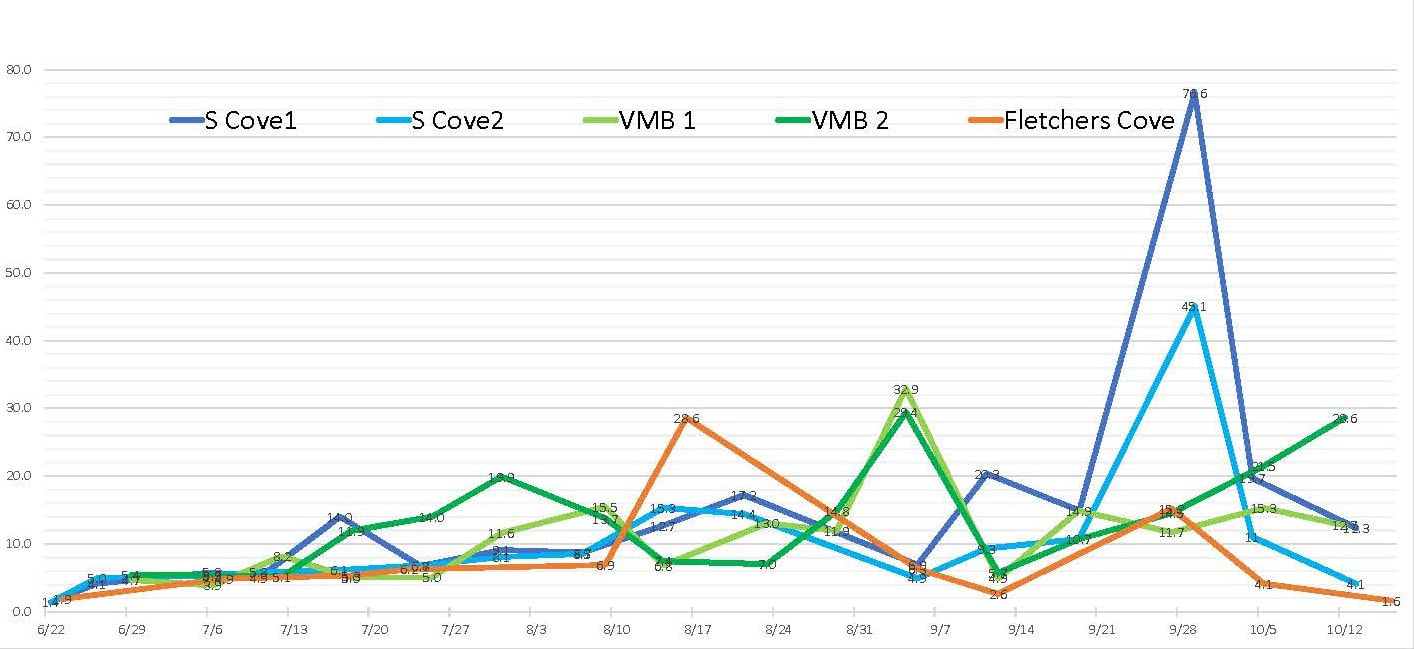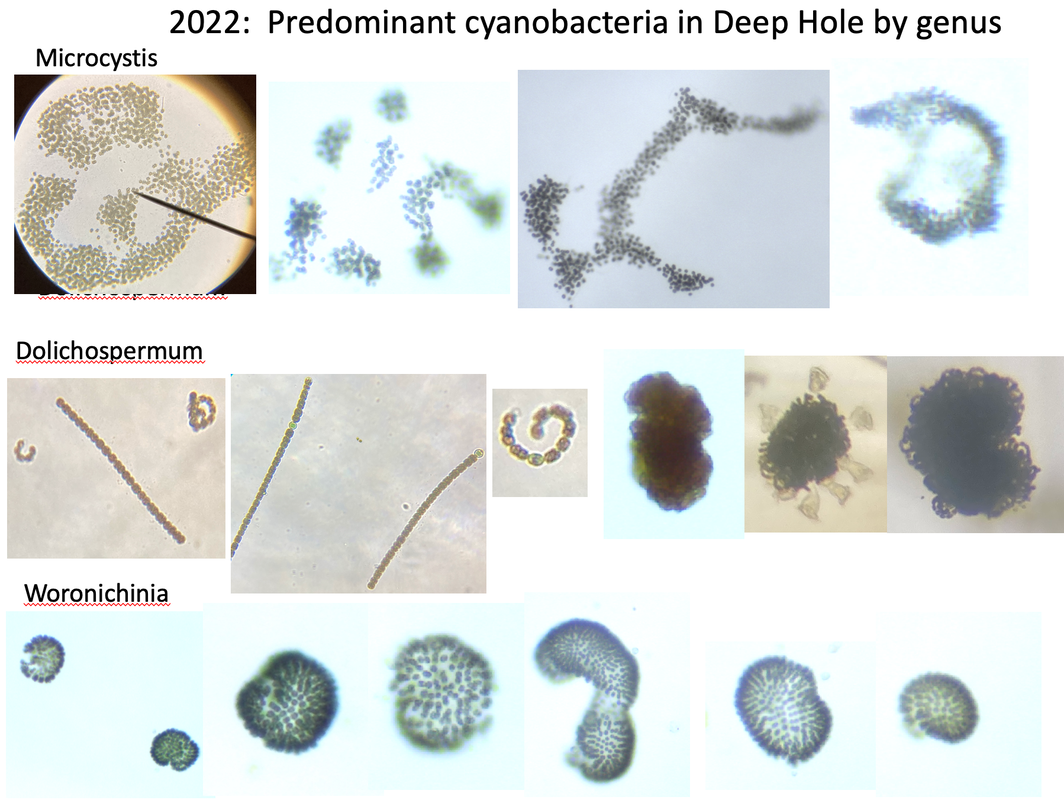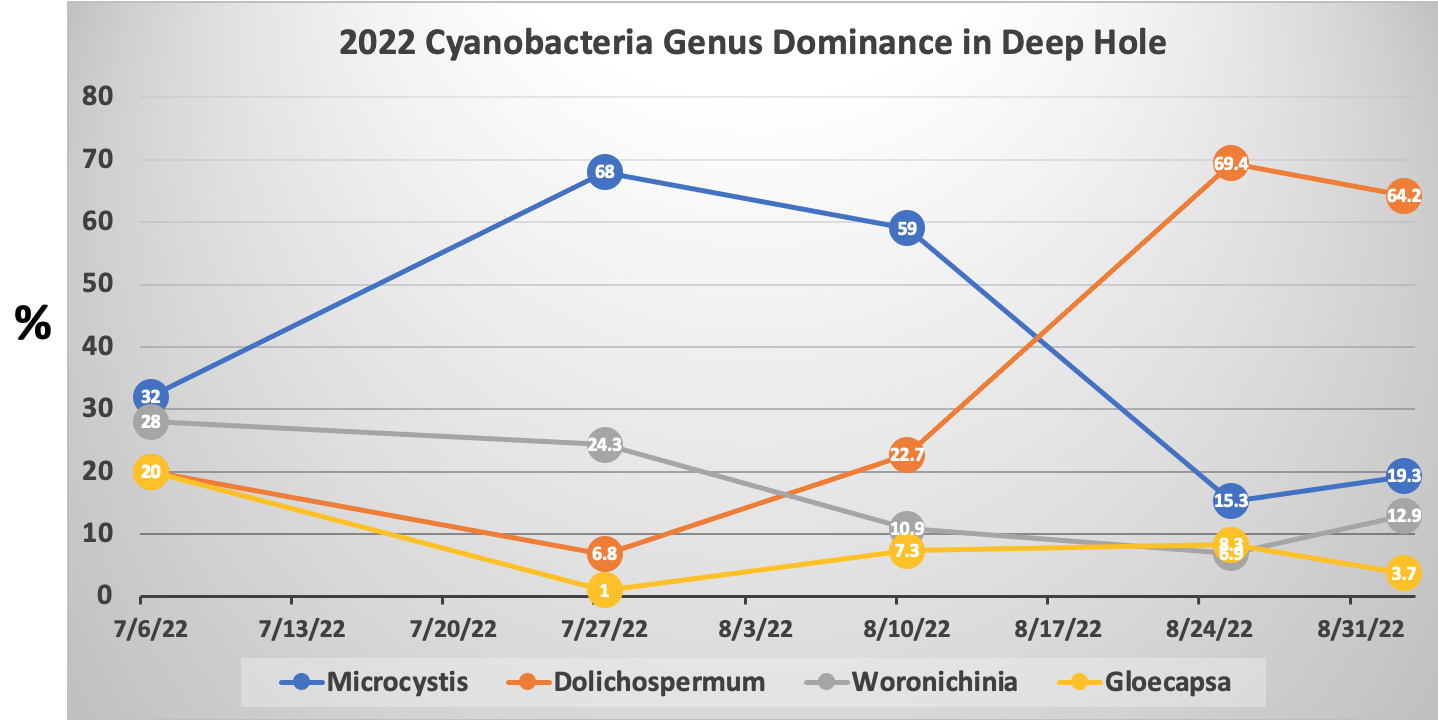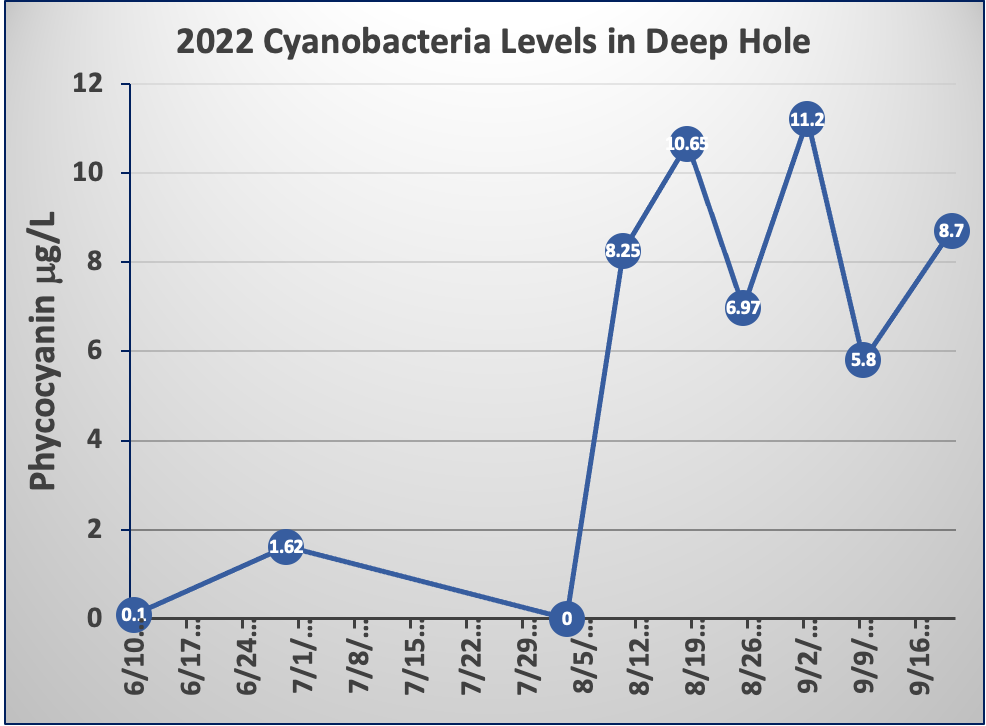2023 Cyanobacteria Testing Results
Background: Dolichospermum and Microcystis blooms often form during warm, calm weather in lakes and ponds with relatively high nutrient concentrations (nitrogen or phosphorus). Dolichospermum blooms usually contain other types of cyanobacteria, especially Microcystis, Woronichinia, Aphanizomenon, & Gloeotrichia. Tangled clumps of Dolichospermum may be colonized by stalked, filter-feeding zooplankton (See above: 2nd row, 2nd image from right).
- Deep hole cyanobacteria monitoring: Plankton from the top 3 meters of water in the deep hole were concentrated with a plankton net. Bloom forming colonies were separated by flotation (ZAPPR), and counted using a Sedgewick Rafter counting chamber.
- Microcystis was the dominant genus in late July – Early August; Dolichospermum became the dominant genus in late August.
- Deep hole monitoring of cyanobacteria levels: Samples integrated over the top 10 feet of water in the deep hole were tested for levels of phycocyanin, a protein produced by cyanobacteria.
- Levels were low/non-detectable in June & July, and detectable but low in August.
- Benchmarks developed by the Worcester Cyanobacteria Monitoring Collaborative suggest there is low risk of toxin exposure under these conditions (ie. Dolichospermum & Microcystis are the predominant cyanobacteria; <12 ug/L phycocyanin.)



